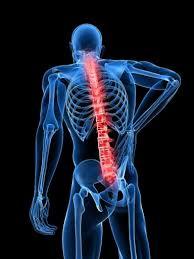Pain is a universal experience, yet its impact extends far beyond the immediate discomfort it causes. Persistent discomfort, whether from chronic conditions, injuries, or ongoing health issues, often has hidden costs that affect various aspects of daily life and work. Understanding these hidden costs is crucial for both individuals experiencing pain and those who support them, including employers, healthcare providers, and family members.
The Nature of Persistent Pain
Persistent pain, unlike acute pain which is typically short-lived and associated with a specific injury or condition, lasts for months or even years. It can stem from a variety of sources such as arthritis, fibromyalgia, or previous injuries. This type of pain is often more than a physical experience; it is intertwined with emotional and psychological challenges that can exacerbate its effects.
Impact on Daily Life
Physical Limitations and Mobility Issues
One of the most apparent impacts of persistent pain is the restriction it places on physical activities. Simple tasks such as walking, lifting objects, or even sitting comfortably can become challenging. This limitation can reduce a person's ability to perform daily chores, engage in hobbies, or participate in social activities. The resulting decrease in physical activity can lead to further health issues, including muscle weakness, weight gain, and cardiovascular problems.
Emotional and Psychological Effects
The emotional toll of persistent pain is often profound. Chronic discomfort can lead to feelings of frustration, helplessness, and depression. Individuals may struggle with anxiety about their health or the future, leading to a diminished quality of life. The psychological burden can be as debilitating as the physical pain itself, contributing to a cycle of discomfort and emotional distress.
Impact on Social Relationships
Persistent pain can strain relationships with family, friends, and colleagues. Individuals may withdraw from social interactions due to discomfort or embarrassment about their condition. This withdrawal can lead to isolation and a lack of support, exacerbating feelings of loneliness and depression. Additionally, family members may experience stress and fatigue as they take on additional caregiving roles.
Effects on Work Life
Reduced Productivity
Pain can significantly impact work performance. Individuals suffering from persistent discomfort may find it difficult to concentrate, meet deadlines, or maintain their usual level of productivity. The cognitive load of managing pain can impair focus and decision-making abilities, affecting overall job performance.
Increased Absenteeism
Chronic pain often leads to increased absenteeism. Frequent doctor's visits, flare-ups of pain, or the need for rest can result in more sick days. This absenteeism not only affects the individual’s income but also places additional pressure on coworkers and can disrupt workplace dynamics.
Workplace Accommodations and Adjustments
In some cases, employees with chronic pain may require workplace accommodations such as ergonomic adjustments, flexible schedules, or modified duties. While these adjustments can help individuals manage their condition and maintain employment, they may also pose challenges for employers in terms of implementation and cost.
Long-Term Career Impact
Persistent pain can impact long-term career trajectories. Individuals may have to change careers, reduce work hours, or retire early due to their condition. This career disruption can have financial implications, including loss of income and reduced retirement savings.
Financial Costs
The financial costs associated with persistent pain are significant. Direct costs include medical expenses for treatments, medications, and therapies. Indirect costs, such as lost wages due to reduced work hours or absenteeism, can add up quickly. Additionally, there may be expenses related to modifications in the home or vehicle to accommodate physical limitations.
Strategies for Managing the Hidden Costs
Comprehensive Pain Management
A multidisciplinary approach to pain management can help address both physical and emotional aspects of chronic pain. This may include medications, physical therapy, counseling, and lifestyle changes. Effective pain management can reduce the overall impact on daily life and work.
Support Systems
Building a strong support network is essential for managing the effects of persistent pain. Support from family, friends, and support groups can provide emotional relief and practical assistance. Employers can also play a role by offering flexible work arrangements and creating an inclusive workplace environment.
Workplace Wellness Programs
Implementing wellness programs that focus on both physical and mental health can benefit employees dealing with chronic pain. These programs might include stress management workshops, ergonomic assessments, and health screenings.
Education and Awareness
Increasing awareness about the hidden costs of pain can foster understanding and empathy among employers, coworkers, and healthcare providers. Educating these groups about the challenges faced by individuals with chronic pain can lead to more effective support and accommodations.
Conclusion
The hidden costs of persistent pain are far-reaching, affecting every facet of daily life and work. Addressing these costs requires a holistic approach that encompasses medical treatment, emotional support, and practical adjustments. By understanding and addressing the hidden costs of pain, individuals and those around them can work towards improving quality of life and mitigating the broader impacts of chronic discomfort.

